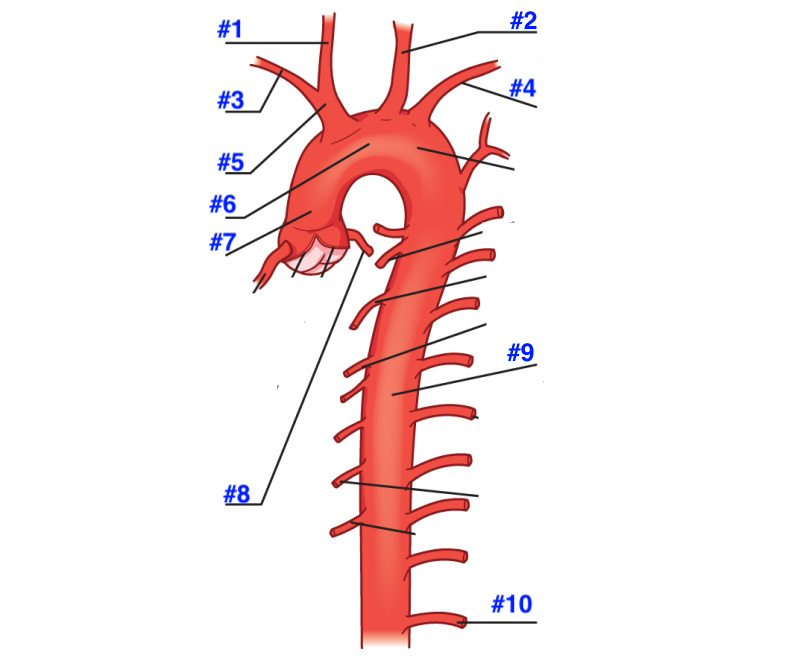theory: vascular sonography lll
1/47
There's no tags or description
Looks like no tags are added yet.
Name | Mastery | Learn | Test | Matching | Spaced |
|---|
No study sessions yet.
48 Terms
Which of the following is the first major branch of the aortic arch?
Brachiocephalic artery
Where is the Inferior Vena Cava (IVC) formed?
By the union of common iliac veins at L5
What anatomical structure does the IVC pierce to enter the thoracic cavity
Diaphragm’s central tendon
Which organ serves as an acoustic window to visualize the intrahepatic portion of the IVC?
Liver
Which vein drains directly into the IVC and not through the renal vein?
Right gonadal vein
What sonographic feature characterizes acute IVC thrombosis?
Anechoic or hypoechoic lumen material
What maneuver can cause the IVC to temporarily collapse during ultrasound evaluation
Valsalva
What is the maximum normal diameter of the IVC?
2.5cm
What is the most common origin of emboli that travel to the pulmonary system?
Deep vein thrombosis in lower extremities
Which imaging plane best visualizes the complete IVC course?
Sagittal
What is a Greenfield filter used for
Trapping emboli in the IVC
What structure does the abdominal aorta bifurcate into?
Common iliac arteries
Which branch of the abdominal aorta supplies the liver, stomach, and spleen?
Celiac trunk
The aortic arch gives rise to how many major arteries?
3
Which segment of the aorta is located between the diaphragm and the iliac bifurcation?
Abdominal aorta
The renal arteries typically arise from which portion of the aorta?
Abdominal aorta
Which of the following best describes the sonographic appearance of the aorta?
Anechoic with echogenic walls
What is the clinical significance of identifying aortic branches during sonographic evaluation?
To access stenosis or aneurysm
Which artery arises from the aorta just inferior to the origin of the celiac trunk?
Superior mesenteric artery
The descending thoracic aorta is located:
Between the diaphragm and aortic arch
Which of the following is the most common location for an abdominal aortic aneurysm (AAA)?
Infrarenal aorta
An aortic aneurysm is diagnosed when the aortic diameter exceeds:
3.0cm
What type of aneurysm involves all three layers of the arterial wall?
True aneurysm
Which of the following is a classic risk factor for the development of aortic aneurysms?
Smoking
Which pathology involves a tear in the intimal lining of the aorta?
Aortic dissectio
A pulsatile abdominal mass is a common clinical finding in:
Abdominal aortic aneurysm
Which sonographic sign is associated with an aortic dissection?
Íntimal flap
What measurement technique is used for AAA in ultrasound
Outer to outer wall
Which of the following complications is most life-threatening in AAA?
Rupture
Endovascular Aortic Repair (EVAR) is primarily used to treat:
Aortic aneurysm
Which segment of the aorta is typically evaluated during an abdominal ultrasound
Abdominal aorta
What patient preparation is required for optimal abdominal aortic imaging?
Nothing by mouth NPO for 6-8 hours
.What is the normal upper limit for the abdominal aorta diameter
3.0 cm
Which transducer is typically used for abdominal aortic ultrasound?
Curvilinear 2–5 MHZ
Which branch of the aorta is the first major unpaired branch?
Celiac trunk
An abdominal aortic aneurysm (AAA) is diagnosed when the aorta measures:
>3.0 cm
What is the most common shape of an aortic aneurysm?
Fusiform (both sides )
A sonographic finding of an intimal flap within the aorta is indicative of:
Dissection
In transverse imaging, the aorta is typically located:
Left of the spine
Why is it important to measure the aorta in both long and transverse views?
To ensure accurate diameter assessment

1- right common carotid artery
2-left common carotid artery
3-right subclavian artery
4-left subclavian artery
5-brachiocephalic branch
6-aortic arch
7-ascending aorta
8-left coronary artery
9-descending aorta
10- subcostal artery
When performing a median arcuate study, the Doppler waveforms are obtained from
above the origin of the celiac axis
Doppler waveforms in the abdomen should be obtained at an angle of ______________________.
Less than 60 degrees
To calculate the resistive index the Doppler waveform is measured at peak systole and ___________________.
End diastolic
An example of a low-resistance signal is the ___________________.
Renal artery
Which control needs to be adjusted to measure the velocity of the blood flow?
Angle correction